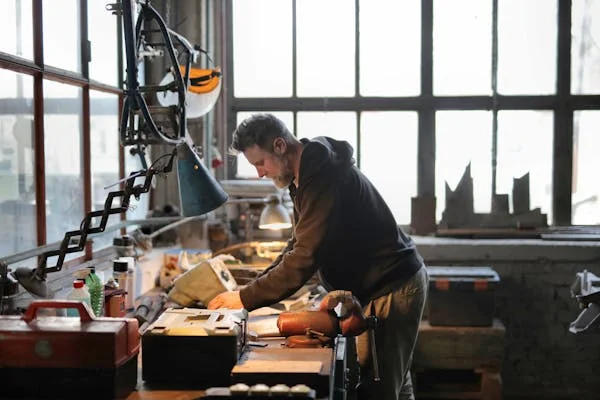In today’s world, technology and automation are transforming industries, including agriculture and landscaping. One significant innovation making waves is the chipperen. Whether you’re maintaining your garden or handling large-scale forestry work, understanding how chippere equipment works can make your tasks easier and more efficient. In this article, we will explore everything about chippere, its uses, advantages, and how it is revolutionizing the field of waste management.
What is Chipperen?
Chippere refers to machinery used for breaking down wood and branches into smaller pieces, often turning them into wood chips or mulch. This technology is invaluable for reducing large volumes of garden waste, especially in industries that manage trees, forests, or large-scale landscaping projects. Chippere machines vary in size and capacity, catering to everything from small residential tasks to large industrial jobs.
How Does Chipperen Work?
Chippere machines are powered by engines that drive sharp rotating blades to cut down wood. The machine pulls in branches or logs and chips them into small, manageable pieces.
Key Components of Chipperen Machines:
| Component | Function |
|---|---|
| Hopper | Where the material is fed into the machine |
| Blades/Knives | Responsible for cutting the wood |
| Discharge Chute | Directs the chipped material into a container or onto the ground |
| Engine | Powers the machine, ranging from electric to gas or diesel engines |
Types of Chipperen Machines
1. Electric Chipperen
Electric models are best suited for light-duty tasks in residential areas. These are quieter and more environmentally friendly but often lack the power for heavy-duty tasks.
2. Gas-Powered Chipperen
These are more powerful than electric versions, capable of handling larger branches. They are often used in commercial landscaping and forestry.
3. PTO Chipperen
PTO (Power Take-Off) chippers are powered by tractors and are best suited for large farms or forest areas. They are incredibly efficient and can handle high volumes of wood.
Advantages of Using Chipperen
Using chipperen offers several benefits:
- Efficient Waste Management: Chipping branches reduces the volume of wood, making it easier to dispose of or repurpose as mulch.
- Environmentally Friendly: By recycling wood waste into useful products like mulch or biofuel, chippere machines promote sustainability.
- Cost-Effective: Instead of paying for waste removal, you can repurpose wood chips for landscaping or composting, saving money.
How to Choose the Right Chipperen
Choosing the right chipperen for your needs depends on several factors:
- Size of the Task: For small yard tasks, an electric model might suffice. For larger tasks, gas-powered or PTO chipperen would be better suited.
- Type of Material: Thicker branches require more powerful models.
- Portability: If you need to move your machine around a lot, consider portable models with wheels.
Safety Tips for Operating a Chipperen
Chipperen machines are powerful and can be dangerous if not used correctly. Here are some key safety precautions:
- Wear Protective Gear: Always wear gloves, goggles, and hearing protection.
- Inspect the Machine: Before each use, check for any signs of wear or damage.
- Feed Material Slowly: Never force branches into the machine too quickly.
- Keep Hands Clear: Never attempt to clear blockages with your hands. Always turn off the machine first.
Maintaining Your Chipperen Machine
Proper maintenance ensures that your chippere machine lasts longer and performs efficiently. Here are some essential maintenance tasks:
- Sharpen the Blades: Dull blades can reduce efficiency and strain the machine.
- Check the Oil and Fuel: Regularly check and replace oil and ensure the fuel is clean.
- Clean After Use: Always clean the machine after use to prevent clogging or rust.
Popular Uses of Chipperen Machines
Chipperen machines are highly versatile and used in several industries. Some common applications include:
- Landscaping: Turning fallen branches into mulch for gardens.
- Forestry: Managing tree waste during logging operations.
- Composting: Creating nutrient-rich compost from wood chips.
- Fuel Production: Converting wood chips into biofuel for energy.
Common Mistakes to Avoid When Using Chipperen
Using a chippere machine may seem straightforward, but mistakes can lead to damage or injury. Here are common errors to avoid:
- Feeding Wet Wood: Wet branches can clog the machine.
- Overloading: Trying to chip too much material at once can cause strain.
- Ignoring Maintenance: Failing to maintain the machine reduces its lifespan and effectiveness.
Chipperen and Environmental Sustainability
The use of chipperen technology plays a crucial role in promoting environmental sustainability. By recycling natural waste into reusable products, chippere machines help reduce the burden on landfills and contribute to cleaner, greener landscaping practices.
Sustainability Benefits:
- Reduced Waste: Less garden and forestry waste ends up in landfills.
- Mulch Production: Chipped wood can be used to protect plants and trees.
- Biofuel: Wood chips are an alternative source of renewable energy.
Conclusion
Chipperen machines are an essential tool for anyone dealing with wood waste, from homeowners with small yards to large forestry operations. By choosing the right model, following safety precautions, and maintaining your machine, you can make the most out of this versatile equipment. Are you ready to streamline your wood waste management and contribute to a more sustainable future.







